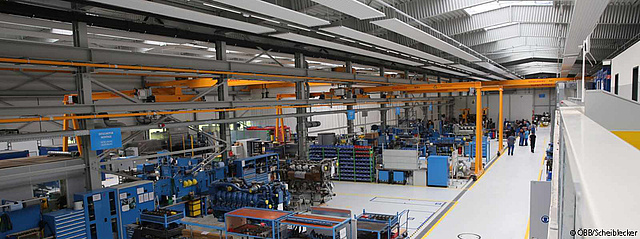
Industrial Projects - Factory Planning
When Em. Univ.-Prof. Dr. Josef Wohinz was head of the institute, factory planning has already played an important role at the Institute for Innovation and Industrial Management. Since 2018, five six-month projects with well-known industrial companies have been completed and two projects are still ongoing. In these projects, a total production area of approx. 150,000 m² was planned. Due to the increasing demand, already five scientific assistants are supervising the projects at the IIM and actively conducting research in the field of factory planning. Students also have the opportunity to actively participate in factory planning projects and gain experience for their professional lives as part of their Master's Thesis.
The institute works on both, brownfield (optimization of existing production sites) and greenfield (new planning of factories “on the green field”) projects, which are usually completed within six months.
The methodology and procedures in the factory planning projects have been iteratively improved and adapted over the years and are usually divided into three phases.
Phase I
In the first phase, the objectives of the project are defined and the current situation in the company is analyzed. All project-specific data are collected to achieve the goals which are defined in the project proposal. In addition to material flow analysis, process analysis, analysis of production areas and transport logistics, students and IIM staff identify optimization potential and derive a catalogue of recommended actions that often go beyond the actual factory planning.
Phase II
First, the work areas are dimensioned at machine/workplace level using the planned requirement quantities. To make this possible, a capacity calculation is carried out. The aim is to define the needed area for future requirements which also includes the dimensioning of staging areas, intermediate storage areas and storage areas. This is followed by the structuring phase, starting with a material flow-optimized arrangement (ideal layout) and after the incorporation of defined boundary conditions the rearrangement of the work areas (rough layout). Together with the industrial partners, a rough layout variant is then selected on the basis of defined criteria, which is further detailed in the detailed layout planning.
Phase III
In the third phase, the rough layout variant chosen by the industrial partner will be further detailed. Using a CAD software solution, the block layout from phase II is converted into a detailed layout. Particularly important are workplace design, dimensioning of transport routes, dimensioning of logistics areas and the arrangement of resources at the workplace level. The second step of phase III is the creation of a discrete simulation model of the selected layout variant and serves primarily to validate the system behavior. The simulation model is carried out with the help of a simulation software solution (industry standard). This is especially used for the analysis, visualization and optimization of the production processes, the material flows and the logistic processes. The simulation model is also used to determine and visualize the resource utilization, to determine the throughput times of the relevant products and to dimension the storage and retrieval areas. The procedure for the creation and execution of the simulation is based on the guidelines of VDI3633. First, the objectives of the simulation are defined and then the layout is created in the simulation environment. Experiments are then carried out and the results are documented and analyzed. By changing the levers in the simulation model, which are defined together with the industrial partner, further knowledge regarding the system behavior is gained. The results of the simulation are then transferred into the detailed layout.
Contribution to research
In addition to active participation in factory planning projects, the students also contribute to science by working on specific questions as part of their Master's Thesis. The industrial projects serve as a basis for the practical consideration of such scientific questions. For example, in 2019, Berker Kantar examined and compared current challenges in classic factory planning procedures both in the literature and within the framework of an industrial project as part of his Master's Thesis "Agile Factory Planning". He then examined approaches of agile project management methods and integrated them into an existing factory planning process in order to face the identified challenges of the traditional factory planning process.
